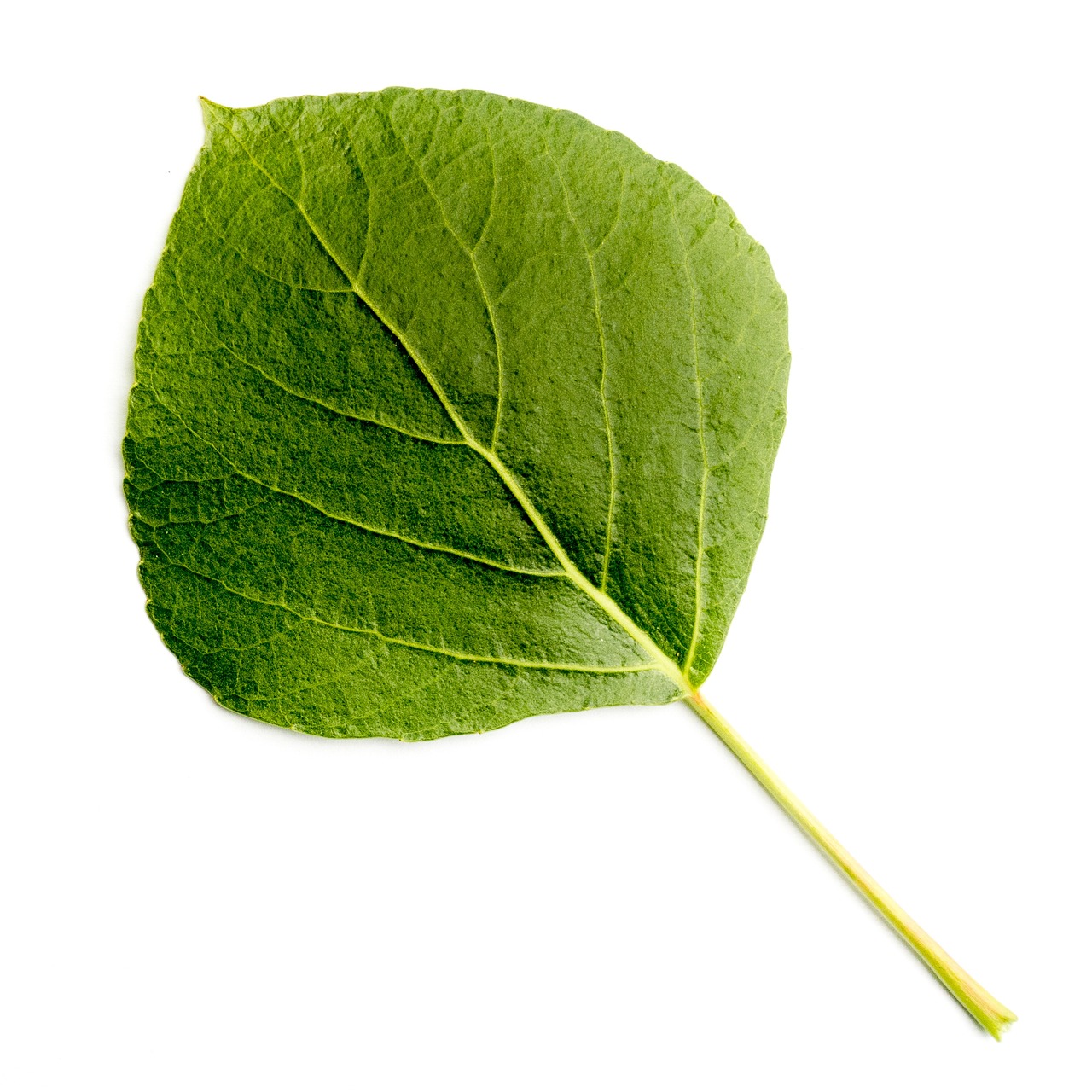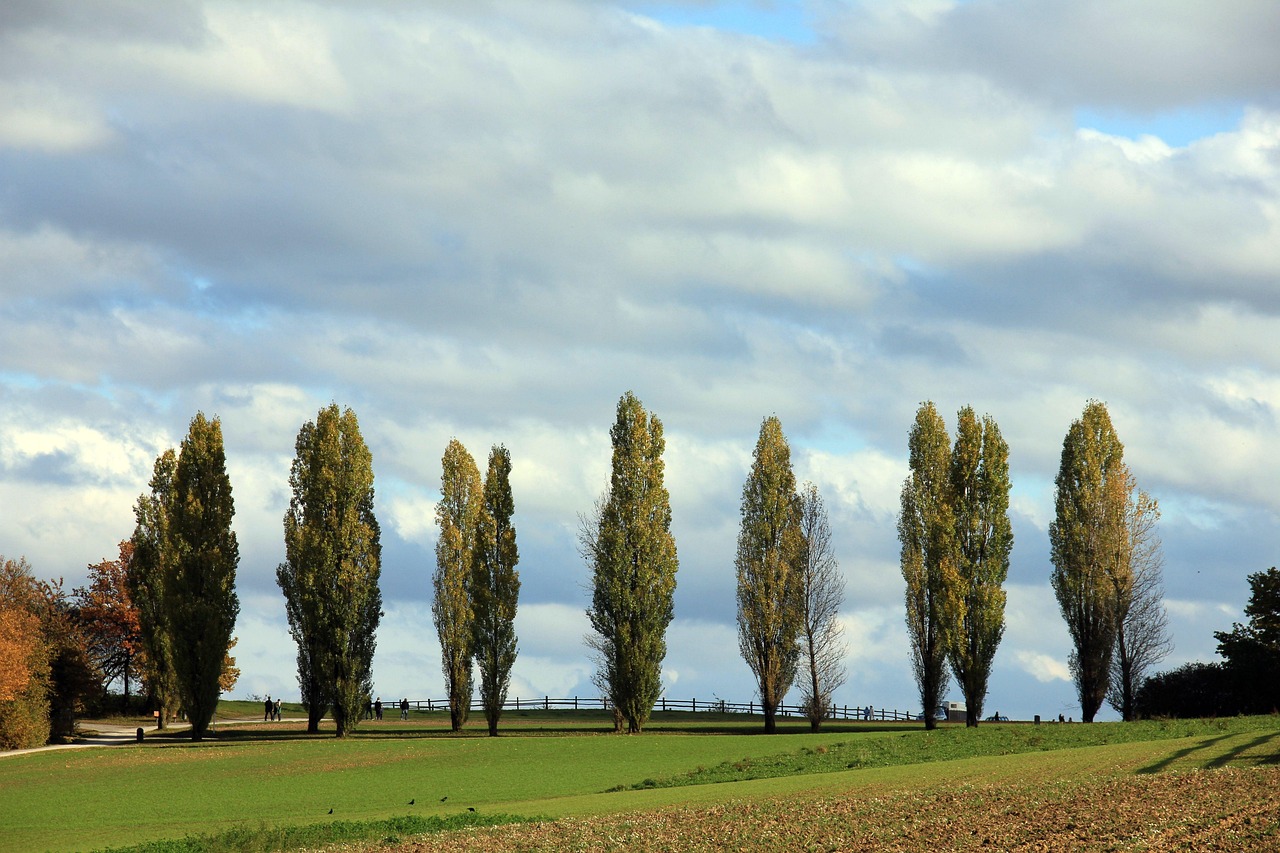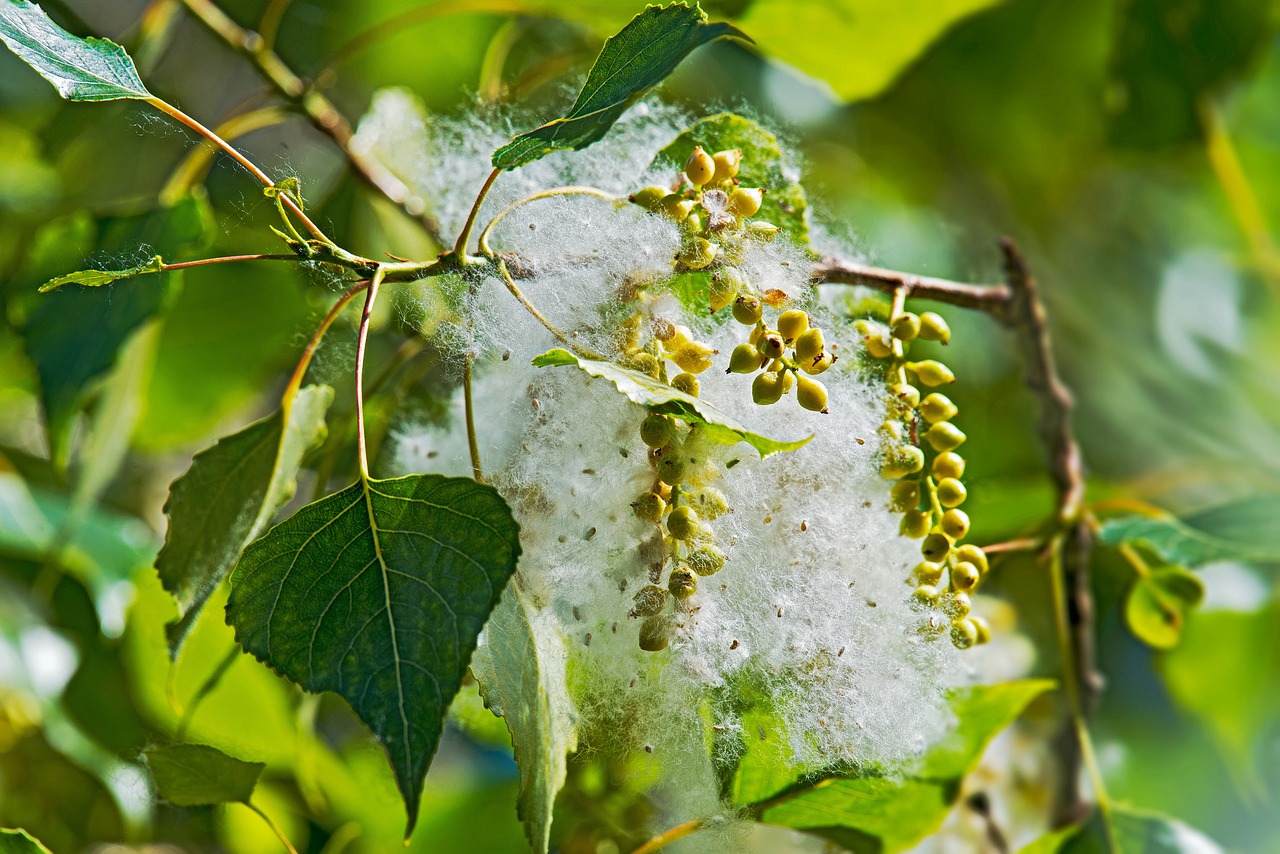Poplar trees are known for their rapid growth rate, which can reach up to 5 to 8 feet per year under optimal conditions, making them an excellent choice for windbreaks and shelterbelts.
Windbreaks and shelterbelts are essential components in agricultural landscapes. They provide protection against wind erosion, enhance crop yields, and improve the overall ecosystem. Poplar trees, particularly, are favored for these purposes due to their fast growth and adaptability to various soil types. Their tall stature and dense foliage create effective barriers that shield crops from harsh winds.

The growth rate of poplar trees can vary based on factors such as species, soil quality, water availability, and climate conditions. Understanding these factors is crucial for anyone considering planting poplar trees for windbreaks or shelterbelts. Below are some key characteristics of poplar trees that contribute to their popularity in these applications:
- Rapid Growth: Poplars can grow significantly faster than many other tree species.
- Height: Mature poplar trees can reach heights of 40 to 60 feet, providing substantial wind protection.
- Diversity: There are several species of poplars, each with unique characteristics suited for different environments.
- Root System: Poplars have extensive root systems that help stabilize soil, reducing erosion.
Factors Influencing Poplar Tree Growth Rate
Several factors influence the growth rate of poplar trees. Understanding these factors can help optimize their use in windbreaks and shelterbelts. The following sections outline the most critical elements affecting the growth of poplars.
Soil Quality
The type and quality of soil play a significant role in the growth of poplar trees. Poplars thrive in well-drained, fertile soils that retain moisture. Poor soil conditions can stunt their growth and affect overall health. Soil testing before planting is recommended to ensure optimal conditions. The following table summarizes preferred soil conditions for poplars:

| Soil Type | pH Level | Drainage | Nutrient Content |
|---|---|---|---|
| Loamy Soil | 6.0 – 7.5 | Well-drained | High |
| Sandy Soil | 6.0 – 7.0 | Moderately drained | Medium |
| Clay Soil | 6.0 – 7.0 | Poorly drained | Low |
Water Availability
Water is another crucial factor influencing the growth rate of poplar trees. While poplars are relatively drought-tolerant once established, they require adequate moisture during their early years to achieve rapid growth. Regular watering schedules may be necessary in dry seasons to ensure healthy development.
Climate Conditions
The climate in which poplars are planted also affects their growth rate. Poplars prefer temperate climates with distinct seasons. They typically grow best in areas with warm summers and cold winters. Extreme weather conditions, such as prolonged droughts or harsh winters, can negatively impact their growth.
Species Selection
Different species of poplar trees exhibit varying growth rates and environmental adaptations. Some common species include:

- Eastern Cottonwood: Known for its rapid growth and adaptability.
- Balm of Gilead: Grows quickly and thrives in moist conditions.
- Lombardy Poplar: Recognized for its tall, columnar shape; ideal for windbreaks.
- Hybrid Poplar: A crossbreed that combines desirable traits from multiple species.
Selecting the right species is vital for achieving the desired outcome in windbreaks and shelterbelts. Each species has specific growth patterns and environmental tolerances that should be considered during planning.
Planting and Maintenance of Poplar Trees
Successful establishment and maintenance of poplar trees are crucial for achieving their full growth potential in windbreaks and shelterbelts. Proper planting techniques, regular care, and timely interventions can significantly enhance their growth rates and overall health. This section covers essential practices for planting and maintaining poplar trees.
Site Preparation
Before planting poplar trees, it is vital to prepare the site adequately. Proper site preparation ensures optimal growth conditions. Key steps in site preparation include:
- Clearing the Area: Remove weeds, debris, and other vegetation that may compete for resources.
- Soil Testing: Conduct a soil test to determine nutrient levels and pH, ensuring the soil meets the preferred conditions for poplars.
- Tilling: Loosen the soil to improve aeration and drainage, which is critical for root development.
- Amending Soil: Based on soil test results, add organic matter or fertilizers to enhance soil quality.
Planting Techniques
The method of planting can greatly influence the establishment of poplar trees. Proper techniques help ensure that the trees take root effectively. Consider the following guidelines:

- Selecting Planting Stock: Choose healthy seedlings or cuttings that are disease-free and vigorous.
- Planting Depth: Dig holes deep enough to accommodate the root system without bending or crowding the roots. The planting depth should generally be equal to the depth of the root ball.
- Spacing: Space trees adequately (typically 8-12 feet apart) to allow for growth and airflow, reducing competition for nutrients.
- Watering After Planting: Water thoroughly after planting to settle the soil around the roots. Ensure that the soil remains moist but not waterlogged during the early stages of growth.
Irrigation Practices
Poplar trees require consistent moisture, especially during their first few years. Establishing a good irrigation regime is essential for optimal growth. Here are some strategies for effective irrigation:
- Drip Irrigation: This method conserves water by delivering it directly to the roots, minimizing evaporation.
- Soaker Hoses: These hoses provide a slow and deep watering solution, ideal for young trees.
- Regular Monitoring: Check soil moisture levels frequently to determine when additional watering is necessary.
Pest and Disease Management
Poplar trees can be susceptible to various pests and diseases that may hinder their growth. Regular monitoring and early intervention are key to managing these threats effectively. Common pests include:
- Aphids: Small insects that feed on sap and can weaken trees.
- Caterpillars: Larvae of moths that may defoliate poplar trees.
- Poplar Borer: A beetle larvae that burrows into the wood, causing structural damage.
Effective management strategies include:
- Regular Inspections: Check for signs of pests or diseases at least once a month.
- Natural Predators: Encourage beneficial insects that prey on harmful pests.
- Pesticides: Use chemical treatments as a last resort, following local regulations and guidelines.
Fertilization
Nutrient availability is crucial for the healthy growth of poplar trees. Fertilization should be based on soil test results and specific tree needs. Here are general fertilization practices:
- Timing: Apply fertilizers in early spring before new growth begins.
- Type of Fertilizer: Use balanced fertilizers with equal parts nitrogen, phosphorus, and potassium for healthy growth.
- Application Method: Spread granular fertilizers evenly around the base of the tree, avoiding direct contact with the trunk.
By following these planting and maintenance practices, landowners can ensure that poplar trees thrive in windbreaks and shelterbelts, maximizing their benefits for agricultural landscapes.
Benefits of Using Poplar Trees in Windbreaks and Shelterbelts
Poplar trees offer numerous advantages when used in windbreaks and shelterbelts. These benefits not only enhance agricultural productivity but also contribute to environmental conservation. Understanding the various benefits can help landowners make informed decisions regarding their planting strategies.
Wind Protection
The primary purpose of windbreaks and shelterbelts is to protect crops, livestock, and soil from wind damage. Poplar trees are particularly effective in this role due to their height and density. Here are some key points regarding wind protection:
- Height and Density: Mature poplar trees can reach heights of 40 to 60 feet, providing significant barriers against strong winds.
- Reduction of Wind Speed: Windbreaks can reduce wind speed by up to 50% within a distance of ten times the height of the trees.
- Improved Microclimates: By reducing wind exposure, poplars help create sheltered microclimates that promote healthier crop growth.
Soil Erosion Control
Soil erosion is a significant concern in agricultural areas, particularly in regions prone to high winds. Poplar trees contribute to soil stability through their extensive root systems. Here are some ways they help control erosion:
- Root Structure: The deep and fibrous roots of poplar trees anchor the soil, preventing it from being washed or blown away.
- Soil Moisture Retention: The shade provided by poplars can help retain moisture in the soil, reducing the risk of erosion during dry spells.
- Increased Organic Matter: As leaves fall and decompose, they contribute organic matter to the soil, improving its structure and fertility.
Habitat for Wildlife
Poplar trees provide vital habitats for various wildlife species. Incorporating poplar trees into windbreaks and shelterbelts can encourage biodiversity on agricultural lands. Key wildlife benefits include:
- Bird Habitat: Poplars attract numerous bird species, providing nesting sites and food sources.
- Insect Populations: The foliage supports a variety of insects, which can be beneficial for pollination and as food for birds.
- Mammal Shelter: Small mammals find refuge in the dense foliage, contributing to a balanced ecosystem.
Enhanced Biodiversity
The introduction of poplar trees into agricultural landscapes can enhance overall biodiversity. This is crucial for maintaining healthy ecosystems. Benefits related to biodiversity include:
- Diverse Plant Life: Planting poplars alongside other tree species creates varied habitats that support multiple plant communities.
- Pest Control: Increased biodiversity can lead to natural pest control, as a variety of species can keep pest populations in check.
- Pollinator Support: Diverse plant species attract various pollinators, enhancing crop yields through improved pollination rates.
Carbon Sequestration
Poplar trees are known for their ability to sequester carbon dioxide from the atmosphere. This is an important benefit in the context of climate change mitigation. Key aspects of carbon sequestration include:
- Rapid Growth Rates: Due to their fast growth, poplars can absorb significant amounts of carbon dioxide quickly compared to slower-growing species.
- Long-Term Carbon Storage: As trees mature, they store carbon in their biomass, contributing to long-term carbon storage solutions.
- Sustainable Practices: Incorporating poplars into sustainable farming practices can help offset greenhouse gas emissions associated with agriculture.
Aesthetic Value
Apart from their practical benefits, poplar trees also add aesthetic value to landscapes. This can enhance the visual appeal of agricultural areas. Considerations include:
- Natural Beauty: The tall and straight trunks of poplars create a striking visual element in open fields.
- Seasonal Changes: Poplars exhibit beautiful foliage changes throughout the seasons, providing year-round interest.
- Cultural Significance: In many cultures, trees are seen as symbols of strength and longevity, adding cultural value to landscapes.
The various benefits of using poplar trees in windbreaks and shelterbelts demonstrate their importance in sustainable agriculture and environmental conservation. By understanding these advantages, landowners can make informed choices that contribute positively to their farming practices and the ecosystem as a whole.
Challenges of Poplar Tree Cultivation
While poplar trees offer numerous benefits for windbreaks and shelterbelts, there are also challenges associated with their cultivation. Understanding these challenges is essential for effective management and successful outcomes. Below are some common issues that may arise:
Pest and Disease Susceptibility
As previously mentioned, poplar trees can be affected by various pests and diseases, which can impede their growth and health. Some notable challenges include:
- Insect Infestations: Certain insects, such as aphids and caterpillars, can damage leaves and weaken trees.
- Fungal Diseases: Diseases like leaf spot and root rot can hinder growth and reduce overall tree vitality.
- Regular Monitoring Required: Continuous monitoring is necessary to identify and address pest or disease issues promptly.
Water Management Issues
Poplar trees require careful water management to thrive. Overwatering or underwatering can lead to stress and reduced growth rates. Considerations include:
- Drought Risks: In areas with low precipitation, young poplars might suffer from drought stress without appropriate irrigation.
- Flood Risks: Conversely, poorly drained soils can lead to root rot if the trees are oversaturated with water.
- Balancing Needs: Finding the right balance in irrigation practices is vital for promoting healthy growth.
Soil Nutrient Management
Maintaining optimal nutrient levels in the soil is crucial for the growth of poplar trees. Challenges include:
- Nutrient Deficiencies: Poplars may exhibit slow growth if the soil lacks essential nutrients like nitrogen, phosphorus, or potassium.
- Soil Amendments: Regular soil testing is recommended to determine the need for fertilizers or amendments.
- Environmental Impact: Over-fertilization can lead to nutrient runoff, impacting surrounding ecosystems.
Future of Poplar Trees in Agriculture
The role of poplar trees in agriculture is likely to evolve as new challenges and opportunities arise. Factors influencing their future use include:
- Sustainable Practices: Increasing awareness of sustainable agricultural practices may lead to greater adoption of poplar trees in farming systems.
- Climate Resilience: As climate change impacts grow, poplar trees may be promoted for their adaptability to changing conditions.
- Research and Development: Ongoing research into disease-resistant poplar varieties may enhance their viability as a windbreak and shelterbelt option.
Final Thoughts
The growth rate of poplar trees makes them an excellent choice for windbreaks and shelterbelts. Their ability to provide wind protection, prevent soil erosion, and support wildlife habitats highlights their multifaceted benefits. However, challenges such as pest susceptibility, water management, and soil nutrient needs must be addressed to ensure successful cultivation.
By incorporating poplar trees into agricultural landscapes, landowners can promote sustainable practices while enhancing the resilience of their farming systems. As the agricultural sector continues to adapt to environmental changes, poplar trees will likely play an increasingly important role in creating a balanced and productive ecosystem.
In summary, understanding the growth dynamics and benefits of poplar trees empowers farmers to make informed decisions that can lead to improved agricultural productivity and environmental stewardship. The future looks promising for the integration of poplars in agricultural practices aimed at sustainability and ecological health.
